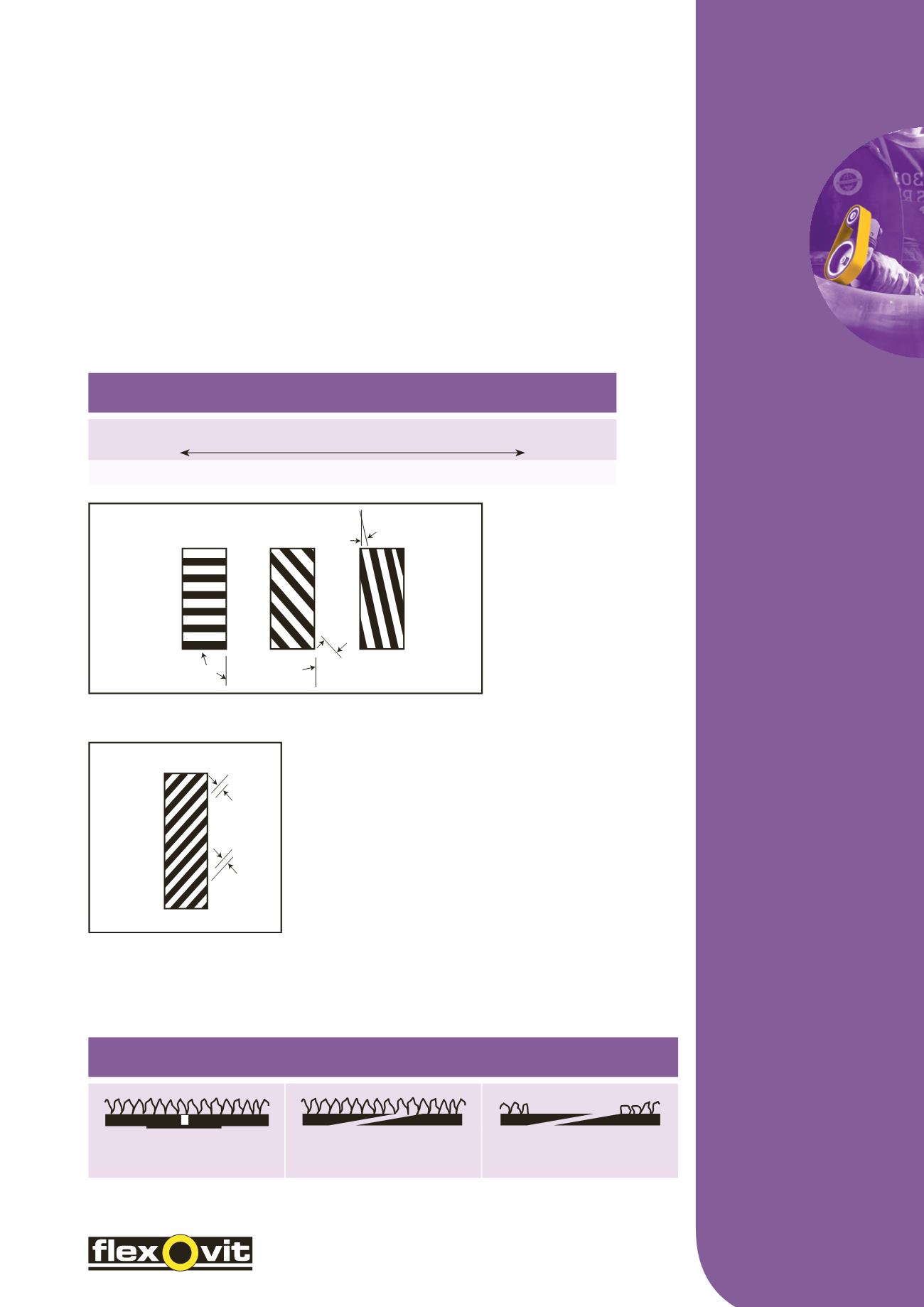

COATED
ABRASIVES
123
JOINTS
Belts are made with a standard joint design best adapted to the product and its main application:
CONTACT WHEELS
Many machines use contact wheels as a backing for belts. Contact wheels are generally covered with rubber,
polyurethane, steel, rubber foam, felt, or compressed canvas, and are classified from soft to hard, with or without
serrations. Using a different type of contact wheel has a direct effect on the end results.
• Harder contact wheels provide a higher cut rate, a rougher surface finish and generate a much more uniform
surface than softer contact wheels. They are used with stiff belts for a faster cut
• Softer contact wheels provide lower cut rates, a better surface finish and follow the contours of the part.
They are generally used for finishing contoured parts or for generating slightly rounded surfaces.
They are much less hard wearing on the belt and its joint.
The design of the contact wheel will also have an effect on the contact area, which in turn affects
grinding pressure.
• Contact wheels with a larger diameter act softer and should generally be used on larger surfaces
• Serrated contact wheels act harder but should generally be used on smaller surfaces
JOINT TYPES
butt joint with tape
overlap joint with
no topskive
overlap joint with
extra topskive
Contact surface decreases as lands decrease giving a more aggressive, harder wheel.
S=L
S
L
90
o
45
o
15
o
S
L
90
o
45
o
15
o
CONTACT WHEEL TYPES
Hard
Soft
Aggressiveness increases as angle increases


















